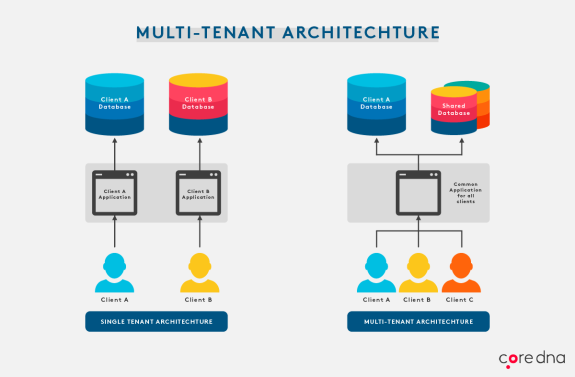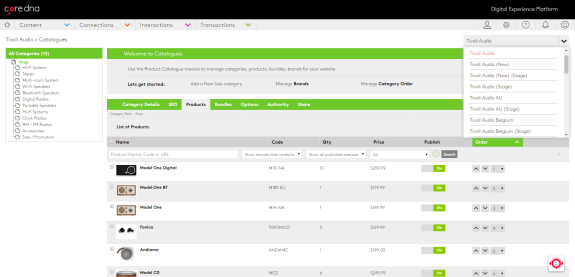Multi Site Management: More Than Just Scaling Up

Managing multiple websites isn't just about adding more domains—it’s about maintaining consistency, control, and clarity across your digital presence. This article uncovers the strategies that separate smooth operations from digital chaos. Effective multi-site management is more than just a trend—it's essential for scalability. Learn the proven strategies that top-performing companies use to manage multiple sites with ease. There a reason the world’s largest brands open new offices and physical stores when they enter new markets. It helps engage locals, and it serves to physically cement the brand’s presence in the lives of their target market.
But if you implement your multi-site strategy incorrectly, then be prepared to experience a major headache when it comes to serving customers in faraway lands.
Now there are a whole host of multi-site management strategies out there on the web, but most of them are unfortunately not that effective. In this post, we share three multi-site management strategies that actually work.
Key takeaways
- Centralized User Management: Streamline operations with a single user database and role-based permissions across all sites.
- Unified Analytics: Use Google Analytics with cross-domain tracking to monitor performance from a single dashboard.
- Multi-Tenant CMS: Share content and resources across sites while managing them individually to reduce complexity and cost.
- Scalability with Control: A smart multi-site strategy supports brand growth, localization, and efficiency without overwhelming teams.
On this page:
What is a multi-site strategy?
A multi-site strategy consists of managing multiple websites from a single dashboard. It allows you to create individual sites that each have its own defined set of unique features, databases, and modules.
Implementation of a successful multi-site strategy has helped businesses to differentiate their multiple brands, enter new markets, increase market share and develop a competitive advantage. It also enables them to introduce a new line of products and scale at an international level. Similar to multi-channel selling, having a multi-site strategy helps brands to launch in specific regions and markets for the sole purpose of attracting locals.
How do most multi-site strategies fail?
The problem arises when organizations are running so many sites that it becomes too overwhelming. Since each site has its own set of resources; developers and marketers tend to have a hard time managing and maintaining all of these sites.
And if it isn’t properly looked after, your multi-site platform could end up having a multitude of unwanted duplications and inconsistencies right across the board, leading to bad user experience for both your staff and for your customers.
To give you an example, let’s say you’re running two separate eCommerce sites which sell the same products from the same inventory. Since each site runs separately, you’re going to have to run two separate inventories. Now to prevent any duplication from occurring in your inventory, you need to manually make sure that the inventory on both sites remains the same. Failure to do so will result in inaccurate stock levels.
To prevent all of this from happening, we share four strategies that will help you to operate a much smoother multi-site operation.
3 multi-site strategies that actually work
[Strategy #1] Multi-user management
When operating a multi-site, you have to manage multiple users, whether they may be content creators, editors, system administrators or webmasters. It is crucial that each of these users profile have their own set criteria and permissions - this prevents users from accidentally accessing parts of the multi-site infrastructure they are not supposed to be in.
It is common practice to assign users to a particular site in a multi-site environment. But the drawback here is that each site will also have their own user database. And for an organization who operate a large number of sites, they would need to go into each individual site just to manage their users. This is both time-consuming and highly inconvenient.
To efficiently manage your users in a multi-site environment, it is best to take advantage of a third-party solution that allows you to amalgamate all of the users on each site into a single user database.
[Strategy #2] Google Analytics multi-site & cross-domain tracking
Rather than going to each site just to analyze how well it is performing, you can view and retrieve the analytic information for all your sites via Google Analytics.
Google Analytics comes with a feature that enables you to track multiple websites under a single Analytics user account. There are two ways to add multiple sites to your Google Analytics account:
- Add all your sites as properties under a single Analytics account ID
- Assign each site to a unique Analytics account ID.
It may be beneficial to do both, in order to track traffic at a granular, as well as at a holistic level.
Another feature of Google Analytics is cross-domain tracking. While the standard Analytic tracking code enables you to retrieve performance data for any given URL, cross-domain tracking makes it possible to retrieve data from two related sites such as an eCommerce site and a third-party shopping cart that is hosted on another domain. This is sometimes referred to as site linking.
Using the example of the eCommerce site and the third-party shopping cart, without cross-domain tracking, a user visits your eCommerce store and then proceeds to your third-party shopping cart will be counted as two separate users, with two separate user sessions. But cross-domain tracking lets you see this as a single session by a single user.
[Strategy #3] Utilize a multi-tenant CMS platform
To fully understand this strategy, let us first define what “multi-tenant” actually means.
Multi-tenancy refers to a governance model and technical architecture where the tenants, such as a brand or department, within a business organization, have the freedom and autonomy to define and manage their own sites, data sources and channels, while, at the same time, have the ability to share the features and resources with the other tenants.
To illustrate this, take a look at the diagram below:

Basically, unlike a multi-site infrastructure where each site has its own database, modules, and features, a multi-tenant architecture shares the resources and data from a central location. This is perfect for organizations that want to operate multiple sites that share both content and features.
Also, by willingly and collectively defining and sharing all the features and resources available, a multi-tenant architecture helps to reduce the cost of both development and maintenance.
A multi-tenant environment is also suitable for organizations who want to run multiple eCommerce brands from a single master inventory rather than having separate inventories for each site that result in inconsistencies as mentioned before.
One of our customers, Tivoli Audio, is a great example of this. Their previous eCommerce platform – Magento – didn’t allow them to manage their sites at local levels. So, if one site went down, the other sites went down as well.
After migrating to Core dna, they’re able to manage the sites individually – different products, pricing structure, payment methods, shipping methods – depending on which country they’re in. Yet at the same time, the company was able to keep things like site design and navigation consistent — due to all the sites being centrally managed.

Get your multi-site strategy working for you
There are many benefits for an organization to run multiple sites. It enables them to establish different brands with different target audiences and also allows businesses to reach out to unique markets.
But having to manage so many sites can feel overwhelming. This is why it is crucial for organizations to incorporate a multi-tenant architecture which allows for sharing resources and data across all sites, which will help to keep both development and maintenance costs low. But also, companies must put in the necessary practices in place to assess the performance of each site and manage their users more efficiently.













